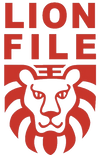Managing important documents and paper clutter can be a real struggle. In order to be more time-efficient and sort through documents more effectively, it is important to have a well-planned and functional filing system that is feasible. Your filing system should take into consideration all the different types of paperwork you have and their level of priority - without overlooking the fact that you need to also stay on top of recycling all unused paper or documentations.
"Visible mess helps distract us from the true source of the disorder." – Marie Kondo. Follow the steps below for simple tips to declutter your desk and easy paper organization ideas.

Step 1: Gather All Papers in One Spot
The most crucial step in organizing your paperwork - be it at your home office or your company desk - is to gather all paperwork in the same space for sorting purposes. Papers and documentations could be piled up and scattered everywhere over time. Hence, in addition to gathering papers from main locations such as your desk drawers and filing cabinets, it’s a good idea to do a sweep of the rest of your home or office as well, just to make sure you have accounted for everything.
Don’t forget to check obvious places where paperworks tend to accumulate such as the kitchen counter or inside an office bag. Gather it all at one spot, preferably one where you have a large enough space to spread out the papers. Sorting papers on the floor or a large table can be effective and really helpful to declutter your desk.
Step 2: Organize Your Papers Into 4 Categories
Next, sorting your paperwork! This is one of the best tactics to declutter and stay organized. Each document should go into one of the 4 categories – Action, Archive, Recycle and Shred. Here’s what to put into each of the categories. As a start, get hold of a good quality hole puncher as it is one of the most important tools needed for a functional filing system.

Action: There are documents or paperwork that you need to take an action on and discard once it is done. These are documentations that are not kept permanently - once actioned, it is to be discarded. A pocket file would be the perfect tool to have on hand here, as it is easy for you to slot in documents in and out. For example, event invitations, parking tickets, appointment reminders, bills, or any submission forms.
Archive: This category is for paperwork that you need to retain for record management purposes. Basically documents that are rarely taken out for reference, perhaps only a few times a year. For instance, financial statements, tax receipts, medical records, warranty cards and car grants. Use a well coordinated set of coloured files for easy indexing and archiving of your documentations.
Recycle: These are papers that do not fall into any of the categories above and contain no sensitive information. Some examples would be junk mail, newspapers, unwanted receipts, magazines or used envelopes.
Shred: This category on the other hand, includes paperwork and documents that are highly sensitive with personal or or confidential company information and hence why it should not be recycled. Examples are employees’ salary, company bank statements or your bonus letter - anything you wouldn’t want others to easily get hold of.
Step 3: Disposal of Recycle and Shred Pile
Let’s get this step out of the way before moving into organizing the archive file. Recycle the documents that are no longer needed to declutter your office desk and shred the documents that contain private and confidential information.
Place a document tray on the most corner part of your desk for documents you want to recycle or dispose of. By regularly organizing these types of documents, you can keep your space clean and desk organized all the time. Next, you can focus on those important items that need to be archived or actioned.
Step 4: Organize the Archive File
Split your archive pile into subcategories for more efficient organization, such as academic, car, employment, financial, health, insurance, personal identification, real estate documents and so on. For each of your subcategories, use a labeled file folder so you can conveniently locate the documents when needed. Coloured index dividers are perfect for this. Moreover, using a chronological or alphabetical order for your filing system could help when you are trying to search for documents of a particular type. For example, you could sort your tax filings and its receipts in a chronological order by the most recent finance year of assessment to the oldest using a Lever Arch File.
Pro Tip: Put the paper in its place as soon as you are done using it, and you will never have a clutter at your desk anymore.
Implementing these organization methods should be a continuing process. Hence, it’s best to choose the method of organization that feels natural and easy to you. Rest assured that you will look at organizing paperwork in a more positive way once you have cleared up the pending avalanche of paperwork you had piling up.
Head over to https://store.lionfile.com/collections/files-and-binders to browse and shop Lion File’s range of files and binder products.


